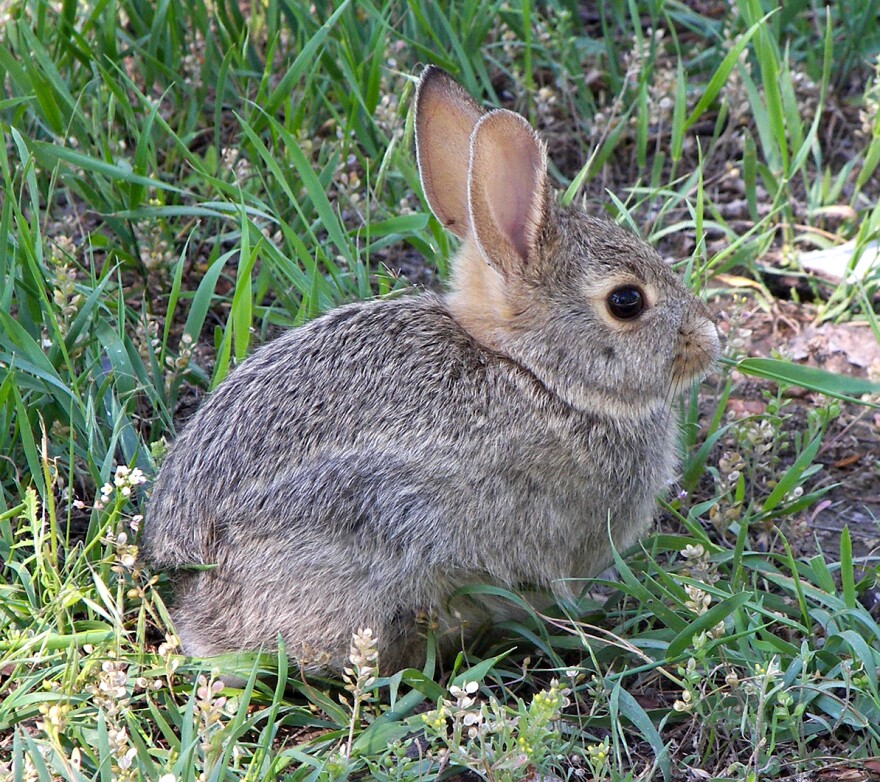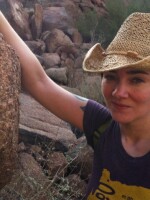Laramie residents have been noticing more rabbits than usual in town this year. Some experts say it’s because there are fewer predators, but others aren’t so sure. Wyoming Public Radio’s Chelsea Biondolillo reports.
CHELSEA BIONDOLILLO: Melissa Gelwicks has had a backyard garden next to Undine Park for about 7 years. She grows everything from squashes and herbs to cabbages, beets and greens. She’s used to rabbits frequenting her garden, but this year there seem to be more of them.
MELISSA GELWICKS: In our yard, and our neighbors’ yards on either side of us, actually, you can look out at most times of the day and see two—one or two or sometimes we’ve seen four rabbits right around our house.
BIONDOLILLO: The rabbits not only dig holes in the yard, they also try to eat her vegetables.
GELWICKS: Once the seeds germinate, the critters come in droves…and we usually lose a batch or two, to bunnies and squirrels, before I get smart enough to put the netting on… and if you look over at the greens bed and the bed with the sugar peas and the beets, you’ll see that there’s some black netting.
BIONDOLILLO: The netting goes over the beds, and she and her husband have also wrapped the garden’s fenced perimeter with chicken wire. This year, after the early losses, he buried the chicken wire several inches below the grass-line, to prevent the rabbits from getting in underneath it.
Melissa thinks there are more rabbits than last year, but it’s hard to know for sure.
STEVE AMRINE: We don’t really take a count… but it’s a possibility. I can say, just observationally, as I go around town, we have a lot of rabbits.
BIONDOLILLO: That’s Steve Amrine, of Laramie’s Animal Control, and he says that the rabbit population naturally fluctuates, but he thinks this year is a little different.
AMRINE: Last year we did have the fox population in this area… it was pretty badly decimated by mange, so… they are one of their chief predators, so with the predator population being down, that could certainly contribute to a population.
BIONDOLILLO: Donal O’toole is a pathologist at the state veterinary laboratory. He’s been researching the local increase in mange, a sometimes fatal disease caused by a skin parasite that occurs in many of Wyoming’s predators.
DONAL O’TOOLE: We see it on a regular basis in coyotes, we see it on foxes, we see it on wolves and it goes in cycles. It is, from a wildlife biologist’s standpoint, one of the diseases that controls population and it can cause a population increase in their natural prey species, including rabbits.
BIONDOLILLO: But not everyone believes that mange is to blame. Grant Frost, a wildlife biologist with Game and Fish in Cheyenne says their rabbit numbers are up, too—but foxes aren’t the only reason.
GRANT FROST: They tend to cycle—you know, go up and down quite a bit—over the course of ten years or so.
BIONDOLILLO: Frost says that while fewer foxes are good for rabbits, there would probably be more rabbits either way. He also says that other predators, such as hawks and owls, will fill in for any missing foxes over time and lower the rabbit numbers.
FROST: The conditions that create these cycles are difficult to predict, but they do just seem to happen naturally, whether it’s drought or a really good moisture year, it’s just hard to tell when these—well, specifically which years are going to be an increase or a decrease, you know… rabbits are just part of the world we live in.
BIONDOLILLO: So, whether or not mange is to blame for this year’s abundance of rabbits remains an open question, but what every expert agrees on is that the numbers will eventually drop back down.
For Wyoming Public Radio, I’m Chelsea Biondolillo.









